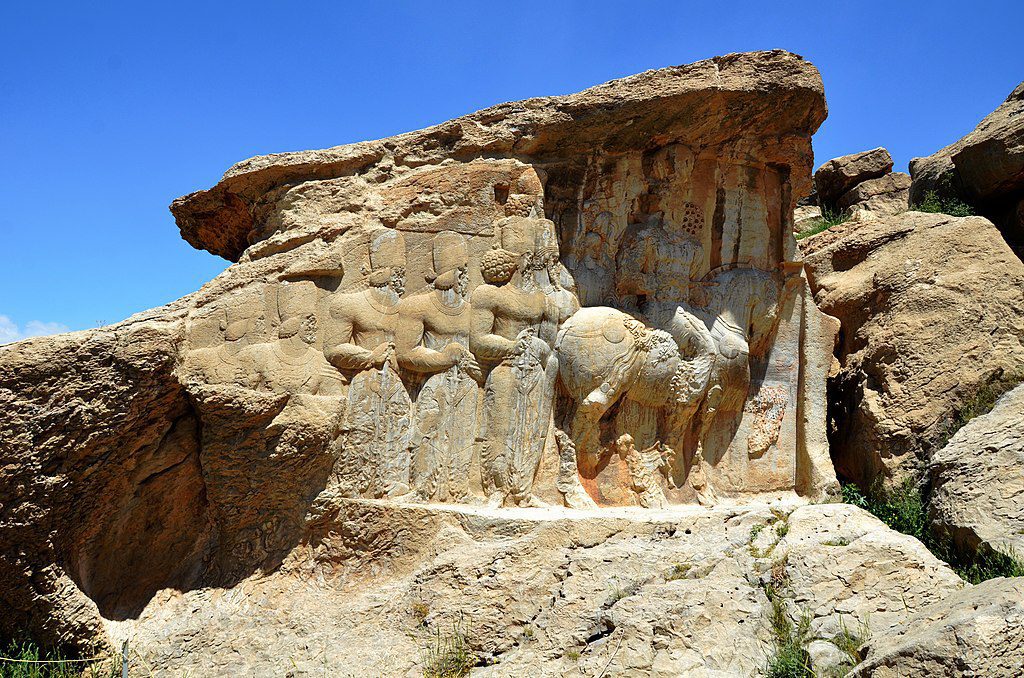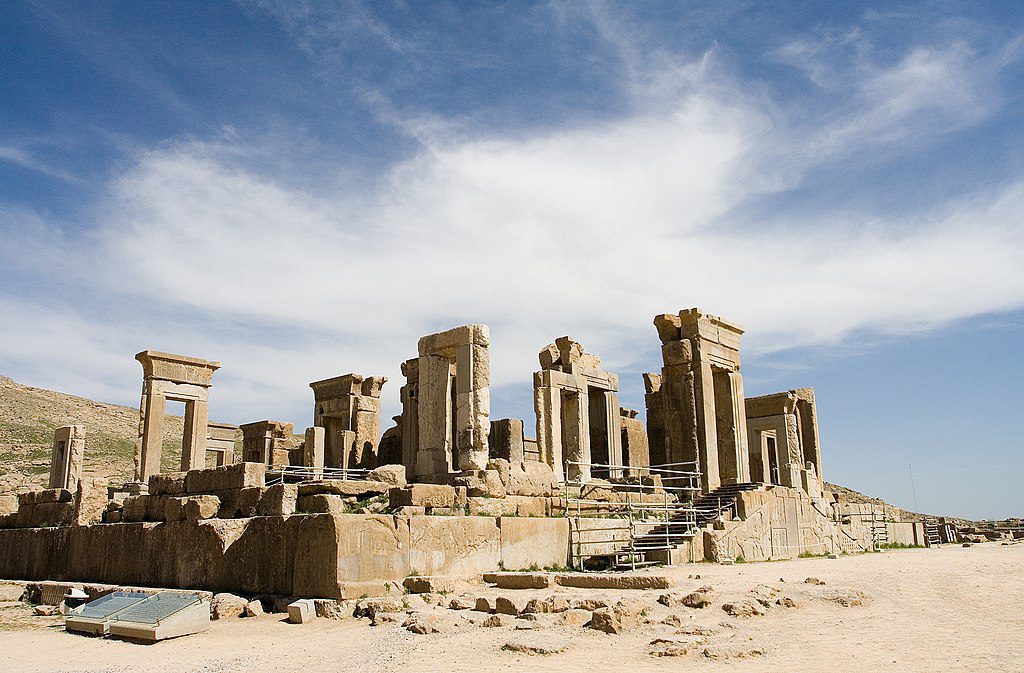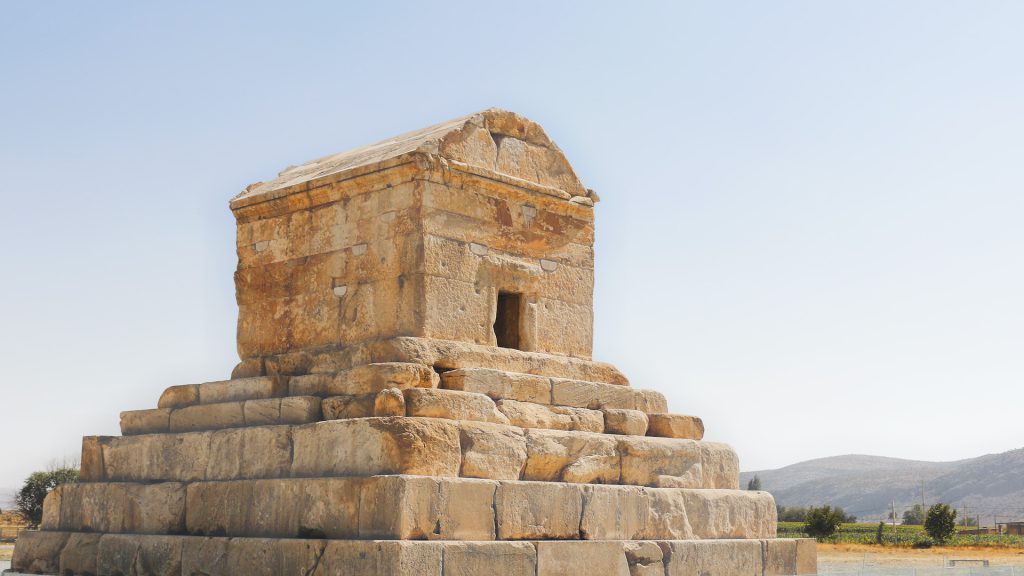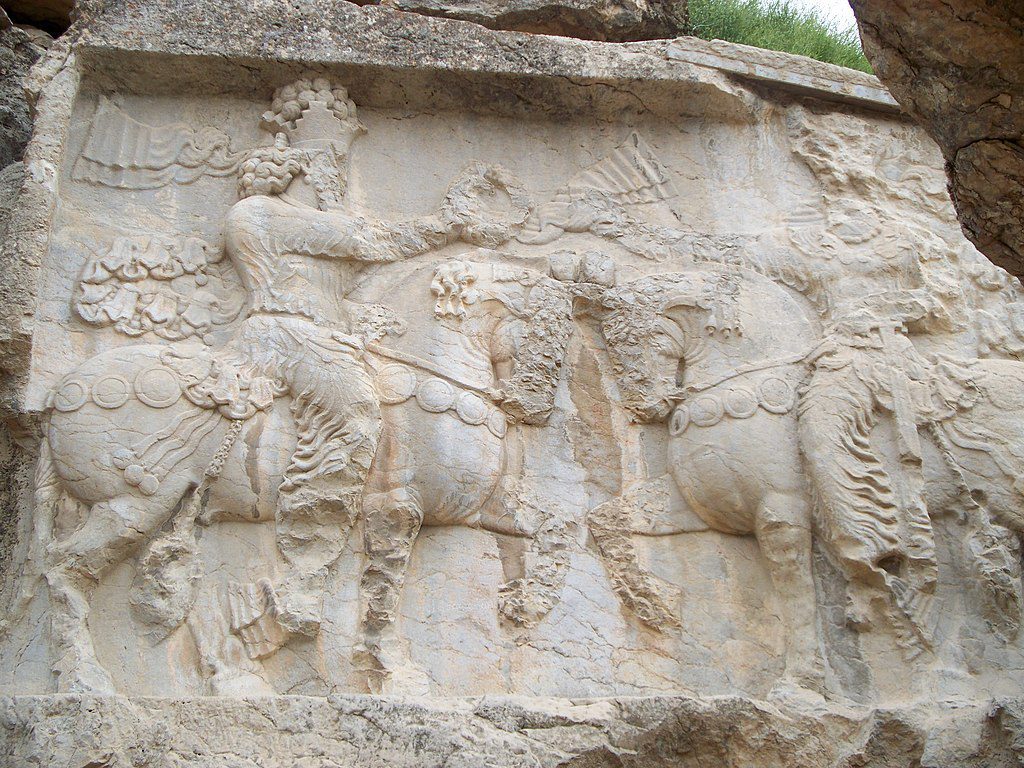Table of Contents
Naqsh-e Rajab is a remarkable archaeological site located in Iran that holds great historical and cultural significance. With its intricate carvings and rich symbolism, this ancient site offers a glimpse into the artistic and religious heritage of the Persian civilization. In this article, we will explore the history, features, and interpretation of Naqsh-e Rajab, as well as its importance for cultural tourism and education.
Naqsh-e Rajab, meaning “Images of Kings,” is an archaeological site situated in Iran’s Fars Province, approximately 60 kilometers northeast of the city of Shiraz. It is renowned for its rock-cut reliefs and inscriptions that date back to the Sasanian Empire, a powerful dynasty that ruled Persia from the 3rd to the 7th century CE. Naqsh-e Rajab is often considered an extension of another famous site, Naqsh-e Rustam, located nearby.
Historical Background
To understand the significance of Naqsh-e Rajab, we must delve into the history of ancient Persia. The Sasanian Empire, which thrived from the 3rd to the 7th century CE, was known for its rich cultural heritage and centralized governance. The rulers of the empire, including kings such as Ardeshir I and Shapur I, played a crucial role in shaping the region’s history.
Naqsh-e Rajab is believed to have been created during the reign of Shapur I, who sought to commemorate his victories and assert the might of the Sasanian Empire. The carvings and inscriptions at Naqsh-e Rajab depict scenes of royal ceremonies, investitures, and battles, providing valuable insights into the political and social aspects of the time.

Location and Features
Naqsh-e Rajab is nestled within a natural rocky hill, surrounded by the mesmerizing landscapes of Fars Province. The main attraction of the site is a cliff face with four large rock-cut reliefs, each featuring the image of a Sasanian king. The figures are carved in high relief and are accompanied by inscriptions in Middle Persian and Parthian languages.
The most prominent relief at Naqsh-e Rajab is that of Shapur I, depicting him receiving a diadem from the Zoroastrian god, Ahura Mazda. Other reliefs showcase Ardeshir I, Hormizd II, and Narseh, each engaged in significant rituals or battles. The artistic finesse and attention to detail in these carvings showcase the mastery of the Sasanian craftsmen.
Significance and Cultural Heritage
Naqsh-e Rajab holds immense religious and historical importance for the Iranian people and is considered a national treasure. The site’s depiction of royal ceremonies and religious symbolism provides valuable insights into the cultural and political climate of the Sasanian Empire. In recognition of its significance, Naqsh-e Rajab, along with Naqsh-e Rustam, has been designated as a UNESCO World Heritage site.
Efforts have been made to preserve and protect the site from natural and human-induced damage. Conservation measures, such as controlled visitor access, documentation, and monitoring, have been implemented to ensure the long-term survival of Naqsh-e Rajab’s historical legacy.
Interpretation and Symbolism
Deciphering the carvings and inscriptions at Naqsh-e Rajab is a fascinating endeavor. The reliefs, with their intricate details, offer glimpses into the religious beliefs and mythologies of the Sasanian Empire. Scholars have connected the carvings to Zoroastrianism, the predominant religion of ancient Persia, and have identified symbols such as fire altars and winged divinities in the artwork.
Naqsh-e Rajab’s carvings also depict scenes of battles and investitures, highlighting the military might and political authority of the Sasanian rulers. The combination of religious and political symbolism in the artwork creates a multi-layered narrative that invites further exploration and interpretation.
Restoration and Conservation
Preserving Naqsh-e Rajab poses various challenges due to its exposure to natural elements and the impacts of tourism. The extreme weather conditions, including heat, wind, and occasional rainfall, can deteriorate the fragile rock surfaces. To combat these issues, conservation experts employ techniques such as cleaning, consolidation, and protective coatings to ensure the longevity of the carvings.
Collaborative initiatives involving government authorities, archaeologists, and local communities have been instrumental in safeguarding Naqsh-e Rajab. These efforts aim to strike a balance between accessibility for visitors and the preservation of this unique cultural heritage.
Cultural Tourism and Education
Naqsh-e Rajab has become a popular destination for cultural tourism, attracting visitors from around the world. Guided tours provide valuable insights into the historical and artistic aspects of the site, allowing visitors to immerse themselves in the ancient world of the Sasanian Empire. Additionally, educational programs are organized to promote awareness and understanding of Naqsh-e Rajab’s significance among students and researchers.
The presence of tourists has also contributed to the local economy, stimulating the growth of businesses and generating employment opportunities for the nearby communities. The site’s popularity as a tourist destination has spurred infrastructure development and hospitality services in the surrounding areas.
Attractions Near Naqsh-e Rajab
While Naqsh-e Rajab itself is a captivating archaeological site, there are several other attractions near its vicinity that offer additional opportunities for exploration and immersion in Persian history and culture. Visitors to Naqsh-e Rajab can make the most of their trip by exploring these nearby attractions. Here are some noteworthy places to visit:
Naqsh-e Rustam
Naqsh-e Rustam, located just a short distance from Naqsh-e Rajab, is another significant archaeological site that should not be missed. Known as the “Necropolis of the Persian Kings,” Naqsh-e Rustam houses rock-cut tombs and monumental reliefs of Achaemenid and Sasanian rulers. The impressive grandeur of the tombs and the rich symbolism depicted in the reliefs make Naqsh-e Rustam a fascinating destination for history enthusiasts.

Persepolis
A short drive from Naqsh-e Rajab will take you to the magnificent ruins of Persepolis, one of the most iconic historical sites in Iran. Once the ceremonial capital of the Achaemenid Empire, Persepolis showcases the grandeur and architectural brilliance of ancient Persia. The monumental structures, including the Apadana Palace and the Gate of All Nations, provide a glimpse into the glorious past of the Persian civilization.

Pasargadae
Venturing a bit further from Naqsh-e Rajab, travelers can explore Pasargadae, an ancient city and UNESCO World Heritage site. Pasargadae was the capital of the Achaemenid Empire under Cyrus the Great, known for its architectural marvels such as the Tomb of Cyrus and the remains of the palace complex. The serene beauty of Pasargadae’s landscape, combined with its historical significance, creates a captivating experience for visitors.

Shiraz
The city of Shiraz, located approximately 60 kilometers southwest of Naqsh-e Rajab, is a cultural and historical hub in Iran. Known for its poetry, gardens, and stunning architecture, Shiraz offers a wealth of attractions to explore. From the famous Nasir al-Mulk Mosque, also known as the Pink Mosque, to the tranquil gardens of Eram and the tomb of renowned Persian poet Hafez, Shiraz provides a delightful blend of art, history, and natural beauty.
Qal’eh Dokhtar
For those interested in ancient fortifications, a visit to Qal’eh Dokhtar is highly recommended. Situated northeast of Naqsh-e Rajab, Qal’eh Dokhtar, meaning “Maiden Castle,” is a Sassanian-era fortress perched atop a mountain. The panoramic views from the fortress, coupled with its architectural splendor, offer a unique perspective on the strategic importance of such structures during ancient times.
Exploring these attractions near Naqsh-e Rajab allows visitors to delve deeper into the rich tapestry of Persian history and culture. Whether it’s the awe-inspiring ruins of Persepolis, the poetic ambiance of Shiraz, or the hidden gems like Qal’eh Dokhtar, these nearby destinations add an extra layer of enchantment to your journey through ancient Iran.
FAQs About Naqsh-e Rajab
1. Can I visit Naqsh-e Rajab all year round?
Yes, Naqsh-e Rajab is open to visitors throughout the year. However, it is advisable to check the local weather conditions and plan your visit accordingly.
2. Are there any entry fees to visit Naqsh-e Rajab?
Yes, there is a nominal entry fee to visit Naqsh-e Rajab. The funds collected from the fees are used for the site’s maintenance and conservation efforts.
3. Are there guided tours available at Naqsh-e Rajab?
Yes, guided tours are available at Naqsh-e Rajab, providing in-depth information about the site’s history, symbolism, and cultural significance.
4. Can I take photographs at Naqsh-e Rajab?
Yes, photography is allowed at Naqsh-e Rajab. However, it is important to respect the site’s regulations and avoid any damage to the carvings.
5. How long does a typical visit to Naqsh-e Rajab take?
A typical visit to Naqsh-e Rajab can range from one to two hours, depending on your interest in exploring the carvings and engaging with the guided tour.
Experiencing the Best of Iran: Customized Tours and Travel Packages
If you have a desire to explore the captivating natural sites of Iran and immerse yourself in its rich cultural heritage, embarking on a customized and active style Iran tour is an excellent choice. By opting for a personalized travel experience, you can design your itinerary to suit your preferences and maximize your exploration of Iran’s diverse landscapes. One such reputable tour operator that specializes in providing unforgettable Iran tours and travel packages is ToIranTour.
Designing Your Ideal Journey: Customized Tours
A customized tour allows you to tailor your travel experience to match your specific interests, whether it’s uncovering ancient historical sites, venturing into untouched natural wonders, or engaging with local communities. With a customized tour, you have the freedom to choose the destinations, activities, and duration that align with your travel goals.
Immerse Yourself in Iran’s Natural Splendors: Active Style Iran Tours
For adventure enthusiasts and nature lovers, an active style Iran tour is the perfect way to experience the country’s stunning natural landscapes. From hiking in the mesmerizing mountains of Alborz and Zagros to exploring the vast deserts of Dasht-e Kavir and Dasht-e Lut, an active tour allows you to connect with nature on a deeper level. These tours often include activities like trekking, cycling, and even camping, providing a unique and immersive experience.
ToIranTour: Your Expert Guide to Iran
ToIranTour is a professional tour operator that specializes in Iran tours and travel packages. With their extensive knowledge of the country, they can design a personalized itinerary that caters to your interests, preferences, and travel style. Whether you seek a cultural journey through ancient cities like Tehran, Isfahan, and Shiraz, or an adventure-filled exploration of Iran’s natural wonders, ToIranTour is dedicated to ensuring you have a remarkable experience.
